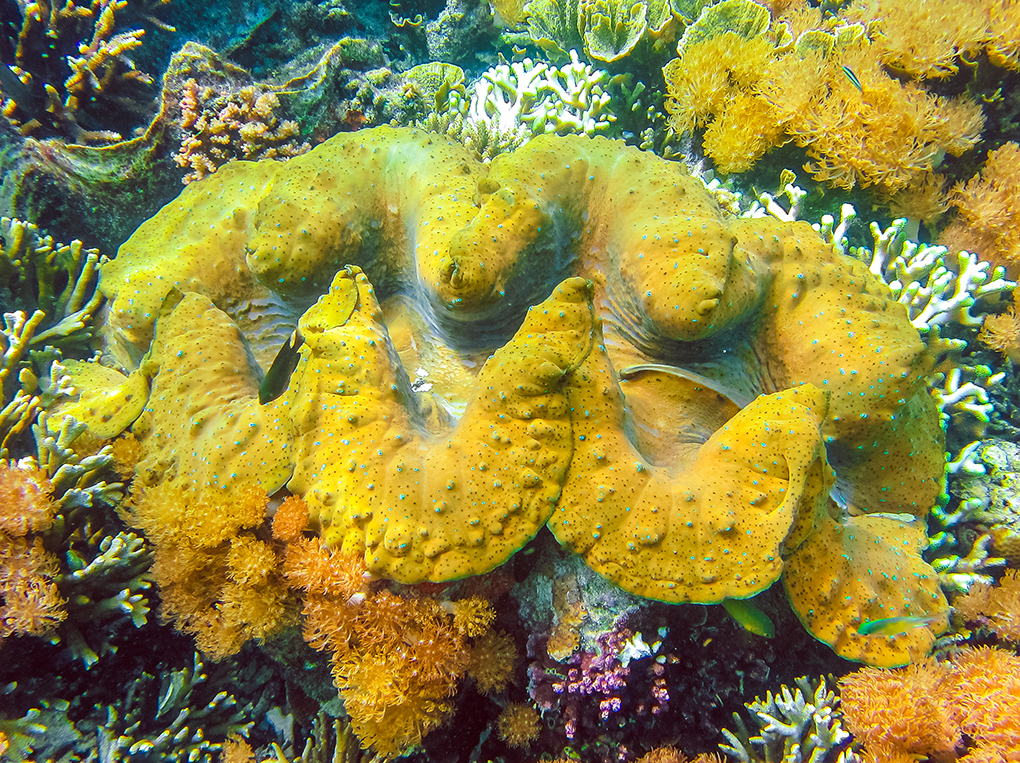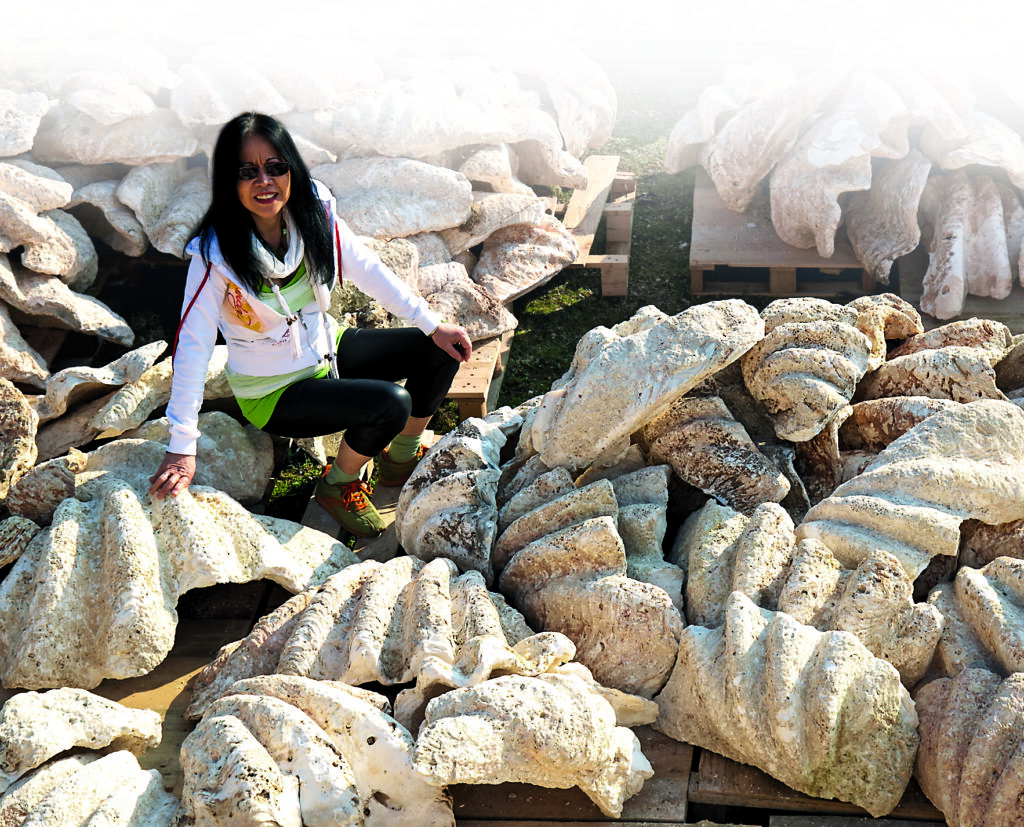
Colorful Tridacna gigas giant clam grows in the shallows of Raja Ampat, Indonesia. Image: Igor Tichonow/Shutterstock
Giant clams offer paleo-climate research an overview of climate change on Earth during the past 65 million years, perhaps helping predict future changes to marine life as global warming accelerates.
Paleo-climatology is the science that deals with the study of weather in the geological past. Unfortunately, opportunities for obtaining detailed weather information from those past times are extraordinarily limited. This also applies to historical extreme weather events such as tropical cyclones, cold or heat waves, and rainfall under various climatic conditions.
A new Chinese study may offer solutions to this problem using the shells of Tridacna giant clams: a research team led by Professor Yan Hong from the Institute of Earth Environment (IEE) at the Chinese Academy of Sciences has found that the shells of giant clams exhibit continuous, clear daily growth bands.

Fossil giant-clam shells imported by German curio trader OM Shanti. Some ancient fossils may reveal changes in sea chemistry in times past. Image: D. Knop.
With the aid of these growth bands, the scientists are able to obtain precise day-by-day information on things such as daily growth rate, the calcium concentration in the surrounding water, and the intensity of the UV radiation. The researchers show that these ultra-high-resolution recordings can clearly and even quantitatively reflect the activities of past extremes of weather.
This means that fossil Tridacna shells from past geological epochs have the potential to provide paleo-weather data from those times that might improve the prediction of future extreme weather events under predicted future global warming scenarios.
—Daniel Knop
Excerpt from CORAL, V17.5, S/O 2020
References
Yan, H., C. Liu, Z. An, W. Yang, Y. Yang, P. Huang, S. Qiu, P. Zhou, N. Zhao, H. Fei, X. Ma, Ge Shi, J. Dodson, J. Hao, K. Yu, G. Wei, Y. Yang, Z. Jin & W. Zhou (2020): Extreme weather events recorded by daily to hourly resolution biogeochemical proxies of marine giant clam shells. – PNAS March 31, 2020 117 (13) 7038-7043; first published March 16, 2020 https://doi.org/10.1073/pnas.1916784117.
OM Shanti: Fossil Curios
http://om-shanti.eu/

